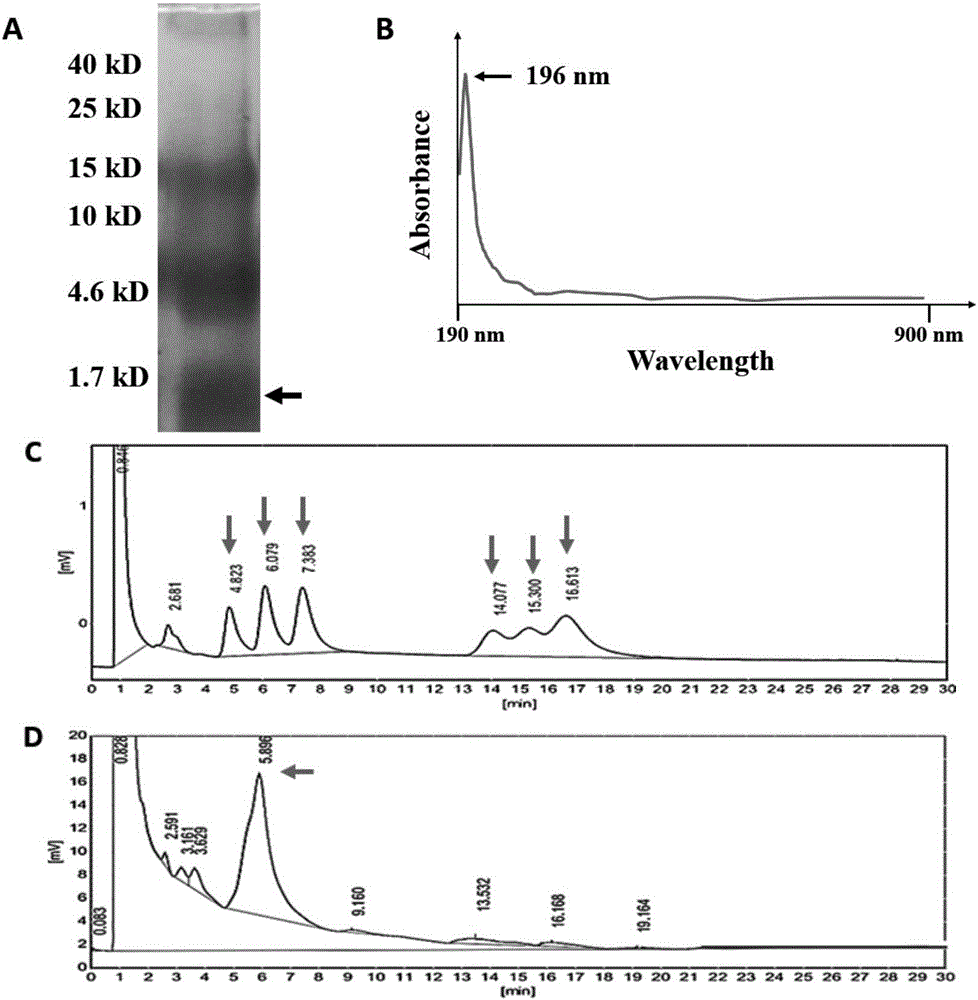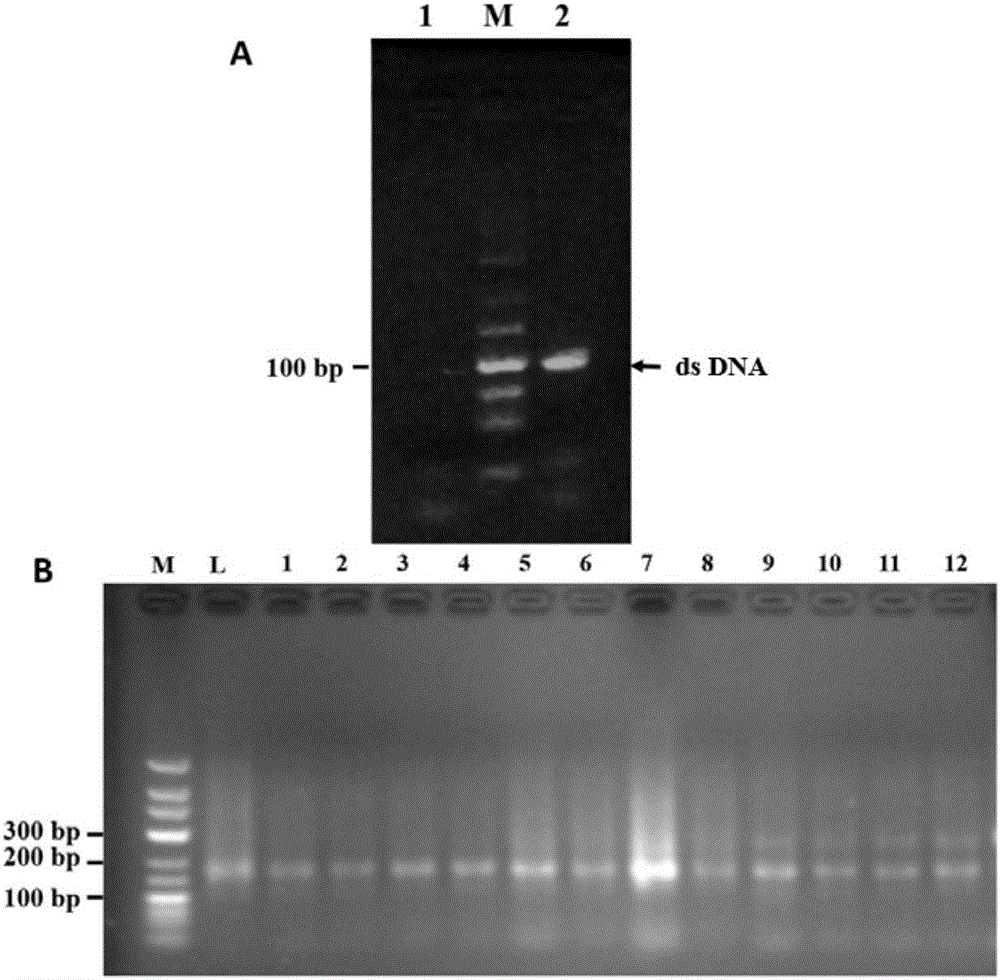Single-stranded DNA aptamer specifically bonded with (1,3)-beta-D-glucose in candida albicans and screening method of single-stranded DNA aptamer and reagent
A technology of Candida albicans and dextran, which is applied in the fields of molecular microbiology and infection immunity, can solve the problems of difficult antibody preparation and detection, and achieve good application prospects
- Summary
- Abstract
- Description
- Claims
- Application Information
AI Technical Summary
Problems solved by technology
Method used
Image
Examples
Embodiment 1
[0032] Example 1: Selection of Materials
[0033] Reagents and Instruments:
[0034] Candida albicans ATCC10231 was purchased from Wuhan University Culture Collection Center; Candida albicans culture medium was purchased from Qingdao Haibo Biotechnology Co.; I. T4 DNA ligase was purchased from Fermentas Company; protein marker (Cat: SM1861) was purchased from Baoke Biological Company; DNA marker was purchased from Dongsheng Biological Company; AxyPrep Plasmid DNA Mini Kit was purchased from AXYGEN Company; DNA gel recovery reagent The cassette was purchased from AxyPrep Company; the PCR mix was purchased from TIANGEN Company; Wavelength Scanner (Beckmann-Coulter); Nucleic Acid Protein Detector (German EPPENDORF Company); PCR instrument (German EPPENDORF Company); single-stranded DNA library and primers were synthesized by Invitrogen Company; chemical reagents were all analytically pure, purchased from Sinopharm Chemical.
[0035] Construction of random single-stranded DNA (s...
Embodiment 2
[0039] Example 2: Extraction method
[0040] Extraction and identification of (1,3)-β-D-glucan:
[0041] Collect Candida albicans cells on the solid medium, add a small amount of PBS to wash, centrifuge and freeze-dry, take 5 grams of dry cells and add 100 mL of 1M sodium hydroxide to resuspend them in a 90°C water bath for 3 hours; after centrifugation, wash the precipitate with pure water 3 times, and then treated with 4% acetic acid solution at 37°C for 3 hours. After centrifugation, the precipitate was washed 3 times with pure water, and then washed 3 times with absolute ethanol. After dehydration with ether, the product was dried with nitrogen to obtain the product, which was passed through gas chromatography. After identification, cryopreservation for future use. Enzymatic hydrolysis with (1,3)-β-glucanase was used to increase its water solubility, and the water-soluble (1,3)-β-D-glucan with a molecular weight of about 1.4kD was recovered by cutting the gel. Sugars as ...
Embodiment 3
[0050] Example 3: Results
[0051] Extraction, purification and identification of (1,3)-β-D-glucan:
[0052] (1,3)-β-D-glucan was extracted from Candida albicans, treated with (1,3)-β-D-glucanase, the supernatant was subjected to SDS-PAGE electrophoresis and then stained with glycogen , found mainly concentrated in three regions, figure 1 As shown in A, the arrow shows the target substance of this study; in this experiment, the low-polymerization degree (1,3)-β-D-glucan with a molecular weight figure 1 As shown in B, the arrow shows the highest absorption peak at 196 nm; figure 1 The arrows in C are from left to right: rhamnose, glucose, arabinose, mannose, galactose and xylose standard, figure 1 The arrow in D shows the monosaccharide after hydrolysis. The recovered material is detected by gas chromatography after acid hydrolysis, reduction and acylation derivatization, and there is only a single peak at the retention time of 5.896min (the rest are miscellaneous peaks), suc...
PUM
 Login to view more
Login to view more Abstract
Description
Claims
Application Information
 Login to view more
Login to view more - R&D Engineer
- R&D Manager
- IP Professional
- Industry Leading Data Capabilities
- Powerful AI technology
- Patent DNA Extraction
Browse by: Latest US Patents, China's latest patents, Technical Efficacy Thesaurus, Application Domain, Technology Topic.
© 2024 PatSnap. All rights reserved.Legal|Privacy policy|Modern Slavery Act Transparency Statement|Sitemap



